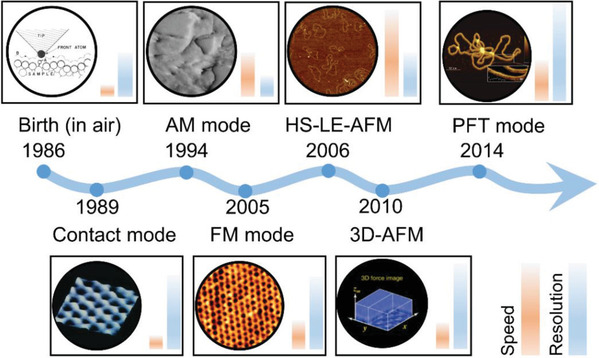Xinhai Chen, Baowen Li, Zixuan Liao, Jidong Li, Xuemei Li, Jun Yin, Wanlin Guo.
Adv. Mater. Interfaces, 2022, 2201864
Abstract:
Liquid environment is essential for the occurrence of various vital processes in fields of chemistry, biology, mechanics, and so on, underscoring the importance of understanding the solid–liquid interfaces. In the past decades, liquid-environment atomic force microscopy (LE-AFM) has played a nonsubstitutable role in studying solid–liquid interfaces because of its sub-nanometer spatial resolution, video-level imaging rates as well as piconewton-level force measuring capabilities. Various state-of-the-art developments and exciting applications are made recently. In this review, following a brief discussion on the development history of LE-AFM, its working principles and operating modes with an emphasis on challenges posed by liquid environments and the corresponding solutions are introduced. As tip–sample interactions set the basis of all kinds of AFM, the interactions between the tip and the sample in liquid, including long-range DLVO forces with quantitative description and short-range non-DLVO, whose physical origination is, by contrast, still in ambiguous, are elaborated. The applications of LE-AFM are then summarized in four aspects, including high-resolution imaging, high-speed imaging, tribological characterization, and force spectroscopy-based characterization. Finally, the perspectives on the future developing direction of LE-AFM are shared.
